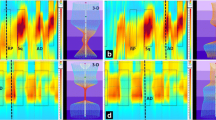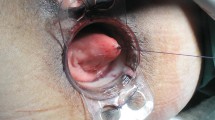Abstract
Background
Surgery for isolated internal rectal intussusception is controversial due to high morbidity. Therefore, there is interest in other forms of treatment that are safe and effective. The aim of this study was to determine outcome and identify predictors for success of biofeedback therapy in patients with rectal intussusception.
Methods
We retrospectively evaluated the results of electromyography (EMG)–based biofeedback in 34 patients with rectal intussusception without any other major pelvic floor or colonic physiologic disorder.
Results
A total of 34 patients (7 men) had undergone at least 2 biofeedback sessions. The patients had a mean age of 68.5 years (SD=11.4 years). In the 27 patients with constipation, the frequency of weekly spontaneous bowel movements (mean±SD) was 2.0±6.8 before and 4.1±4.6 after biofeedback (p<0.05). The frequency of weekly assisted bowel movements decreased from 3.8±3.5 before to 1.5±2.2 after therapy (p<0.005). The number of patients who experienced incomplete evacuation decreased from 17 (63%) to 9 (33%) (p<0.05). Thirty–three percent of patients had complete resolution of the symptoms, 19% had partial improvement, and 48% had no improvement. Patients with constipation lasting less than nine years had a 78% success rate vs. 13% in patients who were consti– pated more than 9 years (p<0.01). In seven patients with incontinence, the frequency of daily incontinence episodes decreased from 1.0±0.7 before to 0.07±0.06 after biofeedback (p<0.05). The fecal incontinence score decreased from 13.1±4.2 before to 4.6±3.6 after treatment (p<0.005). Two patients (29%) were completely continent following biofeedback, 2 had partial improvement, and 3 (43%) had no significant improvement. There was no mortality in either group.
Conclusions
Biofeedback is a safe and effective treatment option for constipation and fecal incontinence due to rectal intussusception in patients who are willing to complete the course of treatment. Long–standing constipation is less effectively cured by biofeedback.
Similar content being viewed by others
Author information
Authors and Affiliations
Corresponding author
Rights and permissions
About this article
Cite this article
Hwang, Y.H., Person, B., Choi, J.S. et al. Biofeedback therapy for rectal intussusception. Tech Coloproctol 10, 11–16 (2006). https://doi.org/10.1007/s10151-006-0244-7
Received:
Accepted:
Published:
Issue Date:
DOI: https://doi.org/10.1007/s10151-006-0244-7




